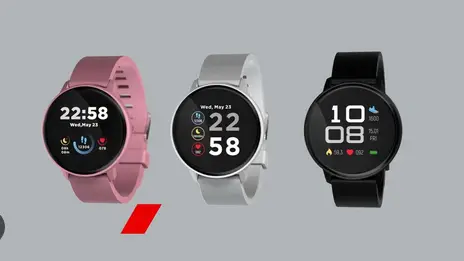Explore the Heartwatch Heart Rate Monitor Review to uncover its precision and reliability. Learn about its performance, features, and how it optimizes heart rate tracking for better fitness results.
Understanding the Role of Heart Rate in Optimizing Workouts
Heart rate plays a pivotal role in the efficiency of your workouts, acting as both a gauge of intensity and a guide to improving performance over time. By monitoring and understanding heart rate, athletes and fitness enthusiasts can fine-tune their training, ensure they’re working within the most effective zones, and ultimately achieve their fitness goals faster. It’s not just about how hard you’re working—it’s about how smart you’re working.
The Science Behind Heart Rate and Exercise
At the heart of every workout lies the rhythmic beating of your heart. During physical activity, your heart rate increases to supply muscles with the oxygenated blood they need to sustain prolonged efforts. Your heart rate isn’t a random occurrence; it’s a direct reflection of the intensity of the exercise you’re performing. Higher-intensity workouts demand more from your cardiovascular system, resulting in a higher heart rate, while lower-intensity activities see less strain on the heart.

Credit:media.post.rvohealth.io
Understanding the science behind heart rate can empower you to optimize your workout routines. When the body is under physical stress, heart rate is a reliable indicator of energy expenditure and effort. Monitoring heart rate allows you to gauge whether you’re in the right intensity zone for fat burning, endurance building, or strength training.
The Different Heart Rate Zones and Their Significance
Heart rate zones are key to achieving specific fitness goals. These zones are typically defined as percentages of your maximum heart rate (MHR), which can be roughly estimated by subtracting your age from 220. Once you have your MHR, the following five zones can guide your training intensity:
Resting Zone (50-60% MHR)
In this zone, the body is operating at its lowest intensity. This level is ideal for warm-ups, cool-downs, and active recovery, allowing the heart rate to gradually elevate without strain.
Fat-Burning Zone (60-70% MHR)
Commonly referred to as the “fat-burning” zone, this level helps the body tap into fat stores for energy. It’s perfect for moderate-intensity, longer-duration activities, such as walking or light jogging.
Aerobic Zone (70-80% MHR)
The aerobic zone is ideal for improving cardiovascular fitness and building endurance. Workouts at this intensity are sustainable for longer periods and help increase lung capacity while also burning fat and carbohydrates as fuel.
Anaerobic Zone (80-90% MHR)
When working in the anaerobic zone, the body is forced to rely on energy stores that do not require oxygen. This is a high-intensity zone typically reserved for shorter bursts of activity, such as sprints or high-intensity interval training (HIIT). It’s essential for building strength, and power, and increasing muscle mass.
Red Line Zone (90-100% MHR)
This zone is the highest intensity level, generally used for extreme efforts such as all-out sprints or maximum exertion. At this level, the body produces lactic acid, and the heart is working at its absolute limit. While effective for short intervals, this zone should only be entered during brief, highly controlled efforts to avoid injury.
Each zone serves a unique purpose in a well-rounded workout program, and understanding these zones helps in structuring a session that aligns with personal goals. Whether aiming to lose weight, gain muscle, or improve endurance, heart rate zones are instrumental in staying on track and optimizing results.
How Monitoring Heart Rate Enhances Workout Efficiency

Credit:i.ytimg.com
Tracking heart rate ensures that workouts are tailored to the body’s current state and goals. Monitoring the heart rate in real-time can provide immediate feedback on how hard you’re working, allowing for adjustments during a session. For example, if your heart rate is too low, you may need to increase intensity to get into the fat-burning or aerobic zones. Conversely, if it’s too high, you may be overexerting yourself and could benefit from a break or a reduction in intensity.
Regularly checking heart rate also helps to prevent overtraining. It’s easy to push too hard, but this can lead to fatigue, injury, and burnout. With heart rate data, the body’s response to exercise is more precisely managed. It can also highlight areas for improvement—perhaps indicating that a person isn’t reaching their ideal fat-burning zone or that they need to push harder to build endurance.
Heart Rate as a Recovery Tool
Recovery is just as important as the workout itself, and heart rate plays a critical role in this process. After an intense session, the heart rate should gradually return to resting levels. Monitoring the heart rate during recovery provides insights into cardiovascular fitness and overall health. A quicker return to normal heart rate levels after exercise typically indicates a higher level of fitness. Conversely, if it takes longer to recover, it may be a sign that more time is needed for rest and recuperation.
Active recovery, such as light jogging or walking, can help to lower heart rate efficiently, promoting blood circulation and the removal of metabolic waste products. This recovery phase is essential for muscle repair, reducing the risk of injury, and ensuring that the body is prepared for future workouts.
Integrating Heart Rate Monitoring into a Fitness Routine
To maximize the benefits of heart rate monitoring, it’s essential to incorporate it into a structured training program. Whether using a heart rate monitor, fitness tracker, or smartwatch, these devices provide real-time data that can be used to adjust your workouts on the fly. The goal should be to train within the optimal heart rate zones to ensure that each session is efficient and purposeful.
For someone aiming for weight loss, staying in the fat-burning zone for the majority of the workout may be the best approach. For those looking to improve cardiovascular fitness, workouts in the aerobic and anaerobic zones are more appropriate. For anyone focusing on strength and power, hitting the higher-intensity anaerobic zone is essential for muscle development.
The Long-Term Benefits of Heart Rate Awareness
Over time, understanding your heart rate and how it relates to different types of exercise can help optimize overall fitness. Training within specific heart rate zones leads to more targeted results and allows for improved tracking of progress. This awareness of how the heart responds to various intensities helps individuals progress efficiently while avoiding plateaus and diminishing returns.
Additionally, tracking heart rate over time can reveal broader health trends. For instance, a decrease in resting heart rate or an improvement in recovery time may indicate increased cardiovascular health. These changes provide tangible evidence of fitness gains, making heart rate monitoring an invaluable tool for long-term health and performance tracking.
Conclusion
Heart rate is far more than just a number; it’s a vital sign that reveals the intensity, effectiveness, and overall health of your workout. Understanding and leveraging heart rate data allows for smarter training, more efficient progress, and a deeper connection to your body’s responses to exercise. Whether you’re training for a marathon, building muscle, or simply improving your fitness, using heart rate as a guide will ensure that your workouts are optimized for success.
FAQ
What is the Heartwatch Heart Rate Monitor?
The Heartwatch Heart Rate Monitor is a wearable device designed to track your heart rate accurately during workouts and daily activities.
How accurate is the Heartwatch Heart Rate Monitor?
The Heartwatch Heart Rate Monitor is known for its high accuracy, offering reliable heart rate tracking using advanced sensors.
Can the Heartwatch monitor be used for all types of exercise?
Yes, it is suitable for a variety of exercises, including running, cycling, and strength training.
How does the Heartwatch Heart Rate Monitor compare to other monitors?
The Heartwatch offers superior accuracy and comfort compared to many other heart rate monitors, with advanced tracking features.
Is the Heartwatch Heart Rate Monitor comfortable to wear?
Yes, it is designed to be lightweight and comfortable, making it ideal for long-term use during workouts or daily activities.
Does the Heartwatch monitor sync with fitness apps?
Yes, it syncs with the most popular fitness apps like Apple Health, Strava, and Google Fit, allowing for comprehensive tracking.
What is the battery life of the Heartwatch Heart Rate Monitor?
The Heartwatch typically offers a battery life of up to several days depending on usage and settings.
Is the Heartwatch Heart Rate Monitor waterproof?
Yes, the Heartwatch is water-resistant, making it suitable for use during swimming or in rainy conditions.
How does the Heartwatch Heart Rate Monitor track heart rate variability?
It uses advanced sensors and algorithms to monitor heart rate variability, providing insight into your fitness levels and recovery.
